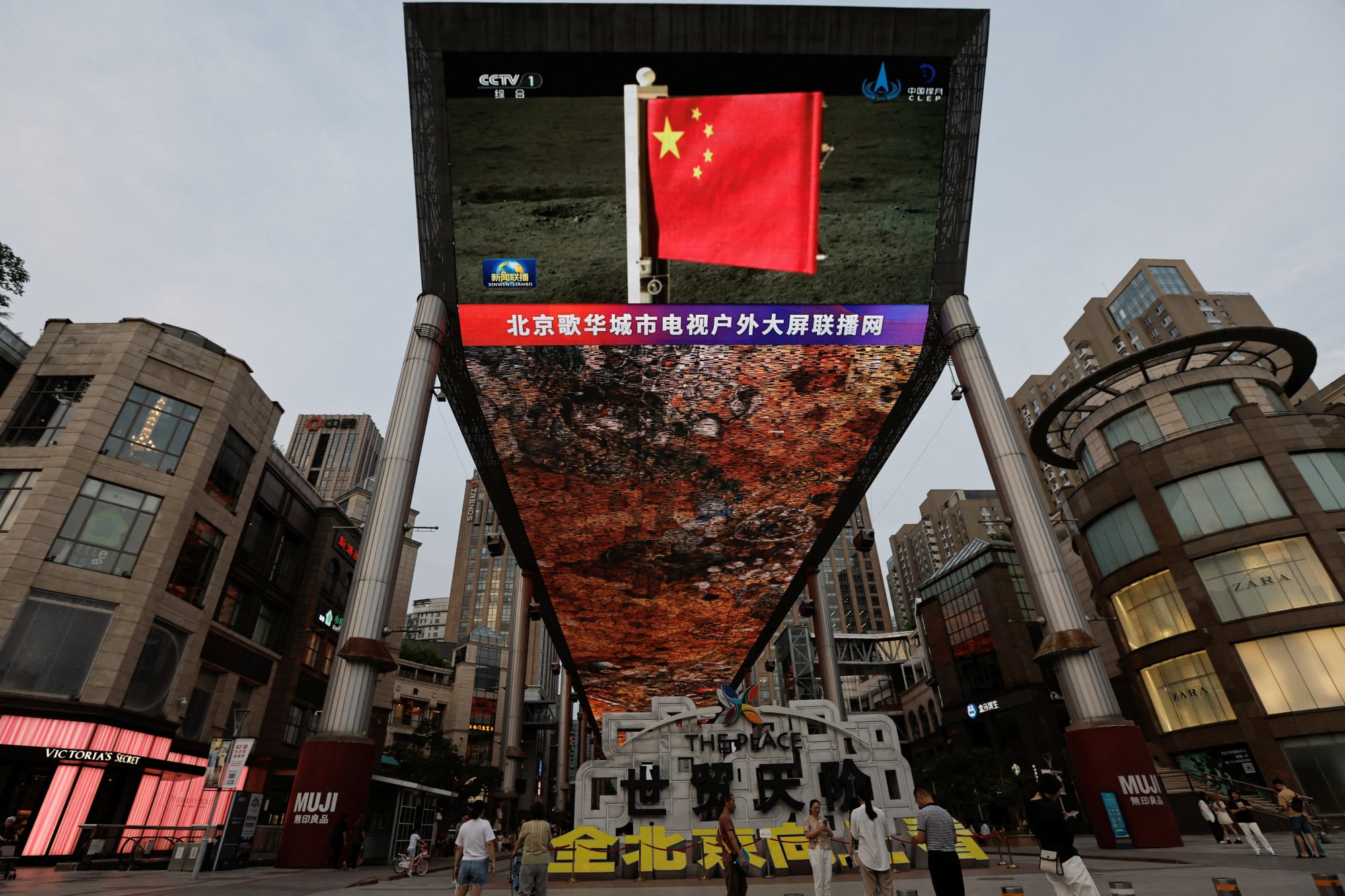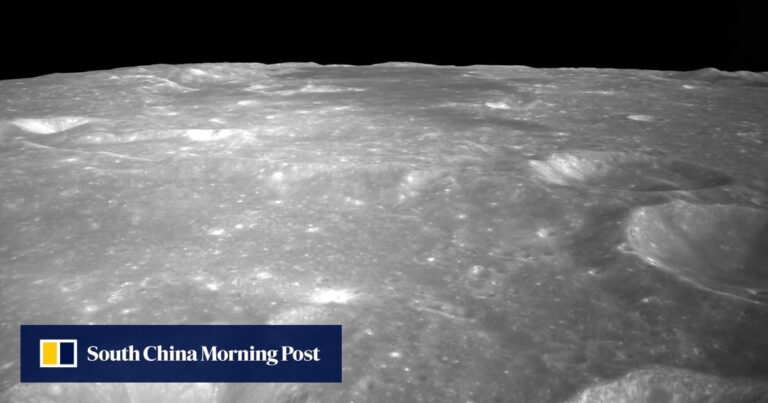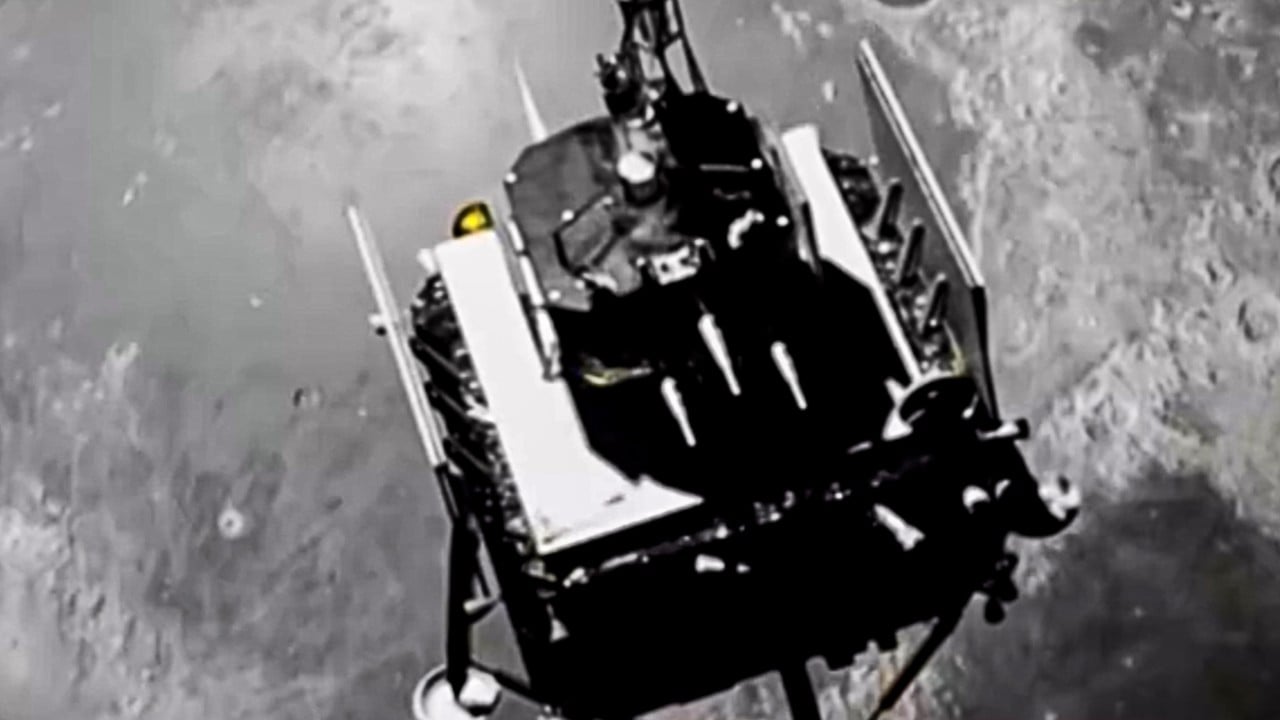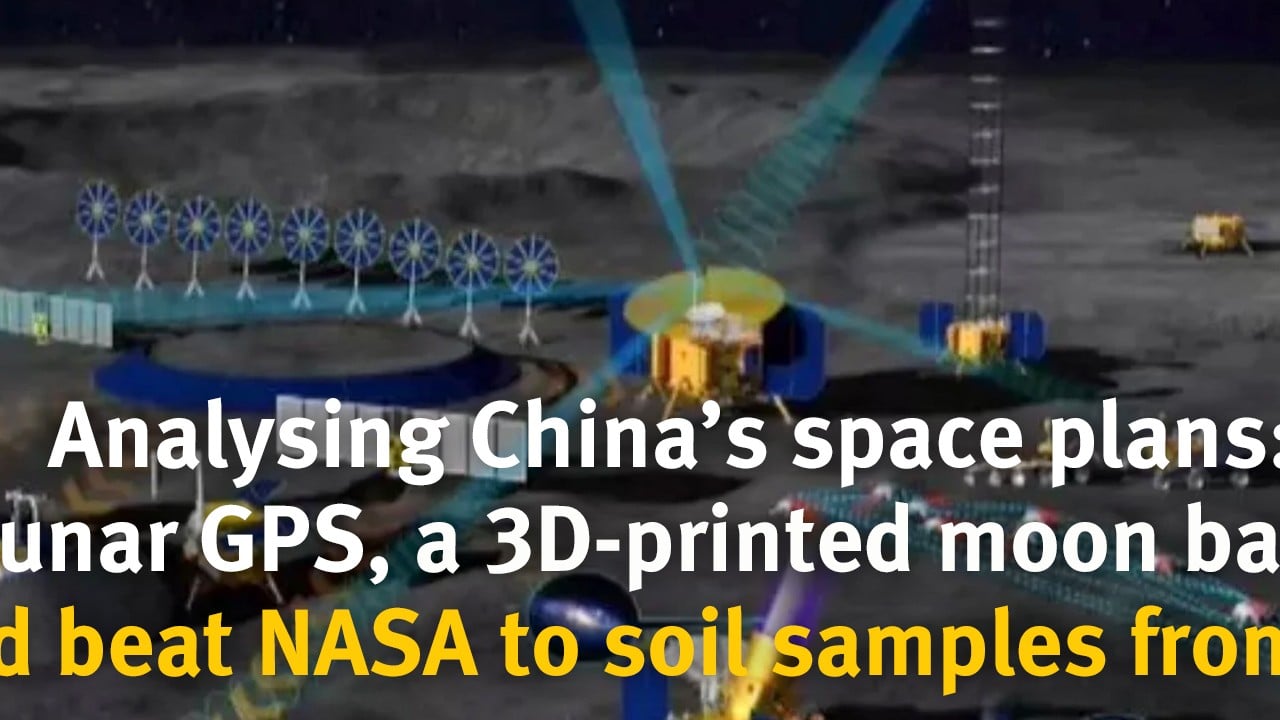When China’s Chang’e-5 mission retrieved the first lunar samples from the near side of the moon in decades in 2020, the initial study was conducted by a joint team of Chinese and Western scientists and published in Science journal in October 2021.
This global sensation led to three more scientific papers being published in Nature magazine that same month, according to editors at Science China Press, a scientific journal publishing company of the Chinese Academy of Sciences (CAS).
The rocks collected in 2020 turned out to be much newer than samples brought back by the U.S. Apollo and Soviet Luna missions in the 1960s and 1970s, leading to a number of surprising discoveries.
“We sincerely hope that some of our country’s breakthrough scientific and technological achievements can be published in China’s top journals, expanding our influence,” said the editor, who spoke on condition of anonymity.
It wasn’t always this way. Tu Youyou, China’s first Nobel Prize winner in science in 2015, published a paper in the China Scientific Journal about the discovery of artemisinin in 1977.
The journal, which is jointly sponsored by the Chinese Academy of Sciences and the National Natural Science Foundation of China, once published many important discoveries but has suffered from a shortage of high-quality papers since the 1990s.

George Gao Fu, a leading expert in virology and immunology and former director of the Chinese Centers for Disease Control and Prevention (CDC), said at a 2018 conference that Chinese as a language of academic communication “used to be a great thing.”
He said groundbreaking achievements such as Tu’s work and the discovery of iron-based high-temperature superconducting materials were first published in Chinese-language academic journals and then recognised by the world.
But over the past 30 years, China’s major scientific research achievements “were basically first reported in foreign journals”, Gao noted.
Interestingly, just a few years later, Gao led a groundbreaking study by the China CDC team on the epidemiology of COVID-19, first published in the New England Journal of Medicine in January 2020.
The move was controversial in China, where people were eager for any information they could about the coronavirus as the country grappled with the early stages of the pandemic.
The reactions to the publication of this research abroad reflect a broader and uncomfortable dilemma faced by Chinese researchers: they recognize the importance and necessity of writing in their own language, but find it difficult to do so on a practical level.
Newton’s Principia was written in Latin. Einstein’s first influential paper was written in German. Marie Curie’s work was published in French.
However, since the middle of the last century, a shift has occurred in the global scientific community, and most scientific research is now published in a single language: English, which is spoken by only around 18% of the world’s population.
It is estimated that up to 98 percent of the world’s scientific research is published in English, while the number of papers by Chinese scholars is also increasing.
Zhu Zuoyan, a biologist and academician at the Chinese Academy of Sciences, pointed out that as early as 2010, the number of papers published by Chinese scholars had increased from 0.2% to 10% of the world’s total, making it second only to the United States.
But China’s academic evaluation system encourages the diversion of good papers to foreign journals, which is one of the reasons the country lacks international academic influence despite having the world’s second-largest number of journals (more than 4,800), he said.
In late 2019, Li Shimin, former director of the Ministry of Education’s Science and Technology Development Centre, called for papers to be published in the country’s official languages if the research is funded by the government.
The requirement would facilitate funder review of research projects, promote funder interaction within the country and improve scientific literacy in the country, he said.
A physicist at the Chinese Academy of Sciences, who spoke on condition of anonymity, stressed that the proposal to “publish research results on homeland soil” does not simply mean submitting and publishing papers in Chinese in domestic academic journals.
That’s “narrow-minded,” he said. Instead, it’s important to focus research on solving key problems and challenges in China’s development, rather than wasting research funds and resources on blindly following global research hotspots.
But at an individual level, there are many practical reasons and incentives for researchers to do so: China’s evaluation system often rewards researchers for publishing in prestigious English-language journals.
In addition to promotion opportunities and academic honours, scientific recognition abroad tends to attract widespread media and public attention and also brings prestige.
Last month, for example, biologist Zhu Jiapeng, one of the lead authors of a research paper published in Nature magazine, won an award for “outstanding contributions” and a 1 million yuan ($138,000) grant from Nanjing University of Traditional Chinese Medicine.
Deng Licai, an astronomer at the National Astronomical Observatory of China under the Chinese Academy of Sciences, believes that research findings from national missions like Chang’e should be published in domestic journals as a priority.
Deng, who served as team leader for China’s giant telescope projects when they were being developed in the 1990s and 2000s, claimed that the first set of studies coming out of the Large-Field Multi-Object Fiber Spectroscopic Telescope (LAMOST) were published in domestic journals.
“This will, first of all, help highlight the domestic nature of these independent, cutting-edge, major scientific projects and also increase the international influence of domestic academic journals,” he said.
But English has become the lingua franca of the international scientific community and should be used as a means of communication, Deng said, adding that it has nothing to do with politics.
Deng said scientists studying Chang’e-6’s lunar samples could consider publishing their papers in Chinese English-language journals such as Research in Astronomy and Astrophysics (RAA).
“All our advance research papers on the Ramosto project published in the RAA are on the list of highly cited papers internationally,” he said.
Zhu Rui, a researcher at the Chinese Academy of Social Sciences, said he prefers publishing in Chinese journals because the academy encourages it, but using his native language when writing academic papers is not an obstacle as long as the scientific community maintains substantial communication.



